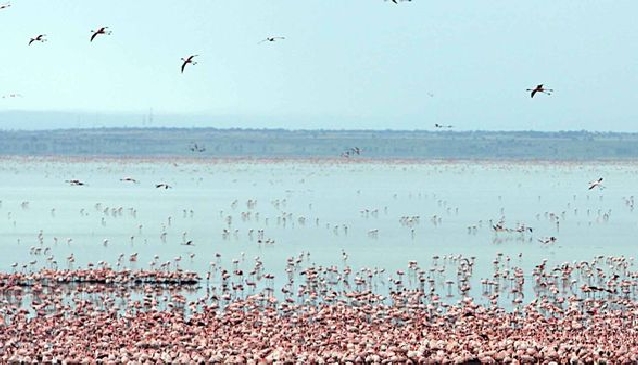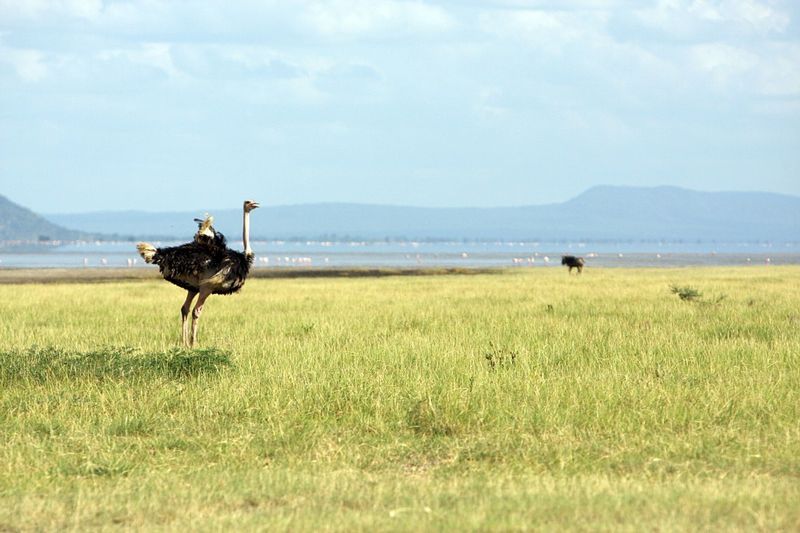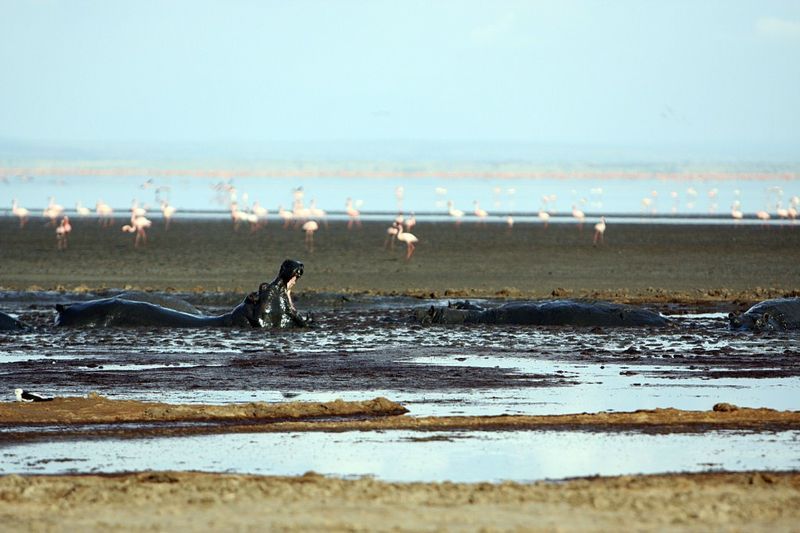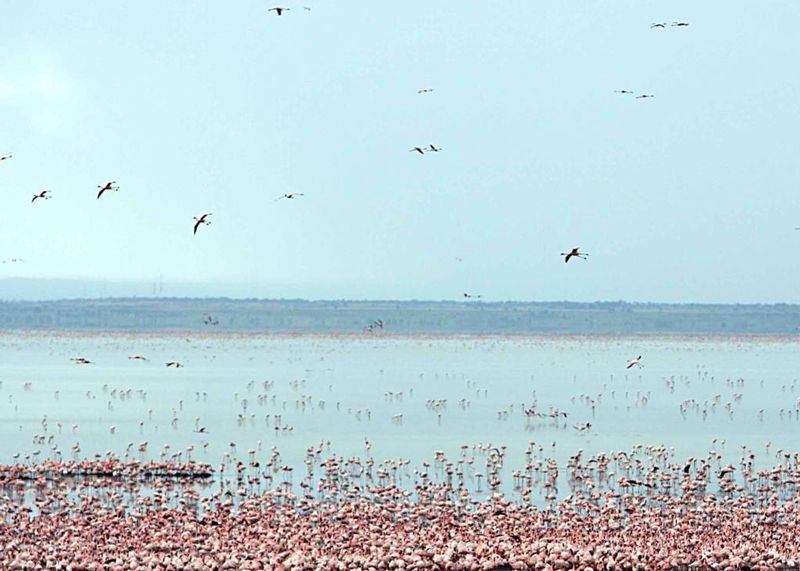More than just a convenience…

Stepping into the 7 eleven store I know what to expect, mainstream food brands and pure convenience. I head straight for the fridge, pick out a can of coke and head to the chocolate bar section seeking out that essential packet of Peanut MnM’s. Last stop – the counter, I pay and I’m done. But am I really? Is there a two for one special on the can of coke or a new range of MnM’s I haven’t yet heard about?
Maybe I should go back and find out.
Deemed to be the 7 eleven convenience National Park, for years Lake Manyara has been inserted into the beginning or end of a safari. The assumption is that it is merely a check-in/check-out park before the bigger acts like Serengeti and Ngorongoro take stage. Lake Manyara is certainly not the major highlight in the Northern Circuit and maybe it never will be. But one thing is for certain; the Park warrants more time and dedication from any safari goer. It definitely has more to offer than just convenience and a glimpse of animals.
Setting out from Arusha late Friday afternoon, we arrive at the Park’s entrance around 4pm and as I wait for my partner to pay and process the park fees, I wonder around standing out in my work clothes among a khaki brigade. As guides check out of the Park for the day, safari goers wearingly step from their vehicle for a stretch and to dust off their precious long lenses.
Only a few months previously I’d travelled to Lake Manyara for the first time. Admittedly, I enjoyed the half-day journey around the Park, but I didn’t leave fulfilled. This second journey was different, we had time up our sleeves.
Immediately beyond the Park’s gate, giant fig and mahogany trees stand exquisitely in their ground water forest. These magnificent beasts draw nourishment from the underground springs, which are continuously replenished from the crater highlands directly above the Manyara basin.
As the green lush forest thins out it gives way to the expansive flood plains, and to the south the typical African postcard landscape, the Acacia woodlands. Hippos camouflage themselves in large mud pools dotted along the flood plain, where as giraffe make the most of the open area to graze on the long grasses.
Zig zagging along the shore the road winds in out of the various environments, but to our right the incredible Rift Valley escarpment guides us to our destination. The escarpment's face, characterized by perennial herbs and distinguished by baobab trees, is dissected by spectacular gorges from which rivers flow nearly all year round.

Credit: Lizzie Halloran
Reaching the most southern tip of the Park, we find our accommodation for the next couple of days, And Beyond’s Lake Manyara Tree Lodge . It is not immediately evident where the lodge is located. Nestled in dense forest between the lakeshore and the escarpment; the lodge is well positioned to explore the Park’s wealth of habitats while remaining truly private.
As we walk the sandy pathway, the lodge’s warm staff greet us with refreshments and cold towels. They take us to the main area, an expansive, split level sitting and dining room with high thatched ceilings that creates an instant sense of space, while its warm wood interiors and understated sofas carve out cosy corners.
The tree-house style suites at the lodge allow the bush to be brought to you with large open windows and a private verandah. However, it’s the freestanding bathtub and outdoors shower both looking directly onto the leafy canopy that completes the experience of these suites.
The luxury continues to the dining table with dinner served in the open outdoor area, fenced off by old forest trees and lit up with an abundant of hurricane lamps. A chef prepares freshly baked Nann bread in a traditional oven, which is then served with a delicious lamb curry. The dinner is the start of some of the most delectable dishes to greet us during our stay.
Over the following two days we take our time to venture into the various pockets of the Park. Absent from our safari are the Park’s famous tree climbing lions, but our satisfaction for animals if greatly made up through the Park’s diversity of animals set among a incredibly stunning landscape.
A relatively small National Park, Lake Manyara covers 329km2, with the lake covering an incredible 231km2. While inundated with large troops of baboons, the lake and its environs hosts a number of herbivores such as hippos, impala, elephants, wildebeest, buffalo, warthogs and giraffes.

Credit: Lizzie Halloran
The Park also provides exciting opportunities for ornithologists keen on viewing and observing over 300 migratory birds, including flamingo, long-crested eagle and grey-headed kingfisher. Spectacular flocks of waterfowl are often present, sometimes breeding. White pelicans, yellow-billed storks, ibis, and white-necked cormorants are also common. At least 44 species of diurnal birds of prey occur, including palm-nut vulture and Ayre's hawk.
Pink patches are scattered along the shoreline separating lush green grass from the lake’s blue grey waters. Thousands of flamingos have also come to Lake Manyara to feed off its alkaline waters. Undoubtedly a beautiful site, we turn off the car engine to listen to the flamingo’s muffled goose-like babble with occasional high-pitched whistles soaring from the distance.
But bird life does not stop there. As we head further south a pair of male ostriches greet us from behind the vehicle, finally running along side it, allowing me to grab my camera and take a photo of these astonishing birds. We wait for a while to watch the pair head for the lake. They stay in our sights for most of the evening, eventually becoming two small black specs on the horizon.
As the afternoon heat approaches, animals find shelter among the shade and we venture back to the lodge to seek out our own. Relaxing in our room, the calming ancient mahogany forest shades the room from the harsh African sun but allows a soft speckled light to billow in.
I fall into a heavy sleep, but soon enough the forest awakens in the late afternoon and I with it. Vervet monkeys and baboons leap from tree to tree, screaming loudly at one another as they defend their own territory. Thunder can be heard in the distance, through the trees and towards the direction of the lake. It’s a sign we must get up and explore again.
We decide to head further south along the lakeshore and away from any other lurking safari vehicles. The lodge has supplied us with a generous amount of beverages and nibbles enabling us to take our time and soak up the true essence of this area.
The sun begins to set behind the magnificent Rift Valley escarpment, producing a phenomenal evening light across the lake. Thunderclouds climb higher and higher into a deep blue sky. Finally a soft sheet of rain across the far edge of the lake hits the ground, while bolts of lightening form sporadically.
We watch the storm move along the lake from the bonnet of our car, cold beer in hand with a sense of freedom and calmness. Zebra, wildebeest, and buffalo can be heard and seen in the distance.
Ernest Hemingway once said Lake Manyara was the “loveliest (lake) in Africa” and I have to agree. Lake Manyara has taught me to be patient and it has shown me that National Parks are not all about animal spotting. This place is about taking the time to appreciate its incredibly beautiful and diverse landscapes that have formed in this small but unique pocket of Tanzania. The animals are merely a decoration, and with or without them I plan return here again.

Lake Mayanara (Credit: Lizzie Halloran